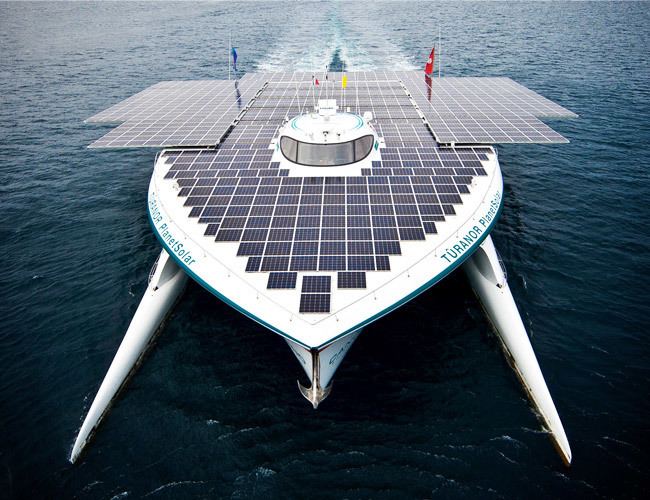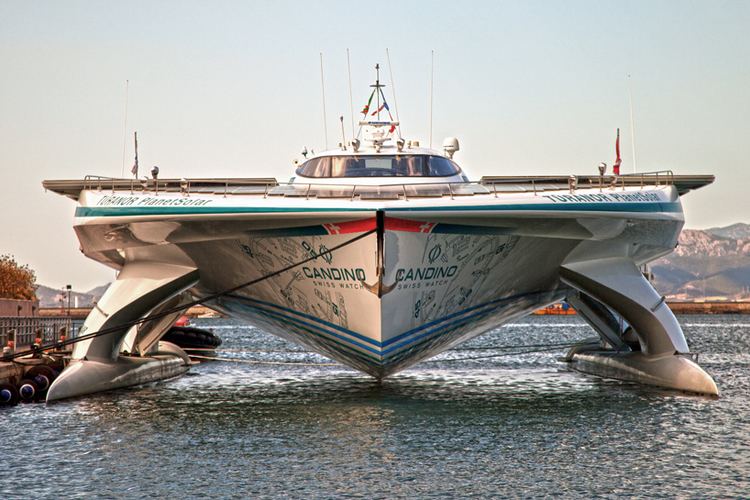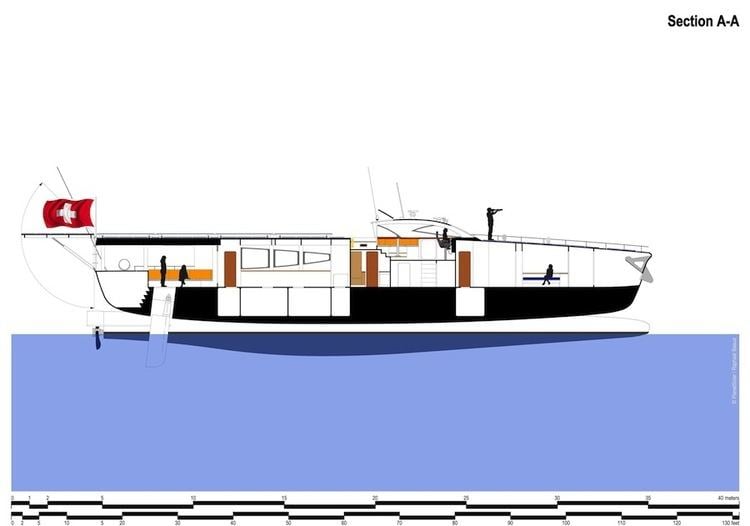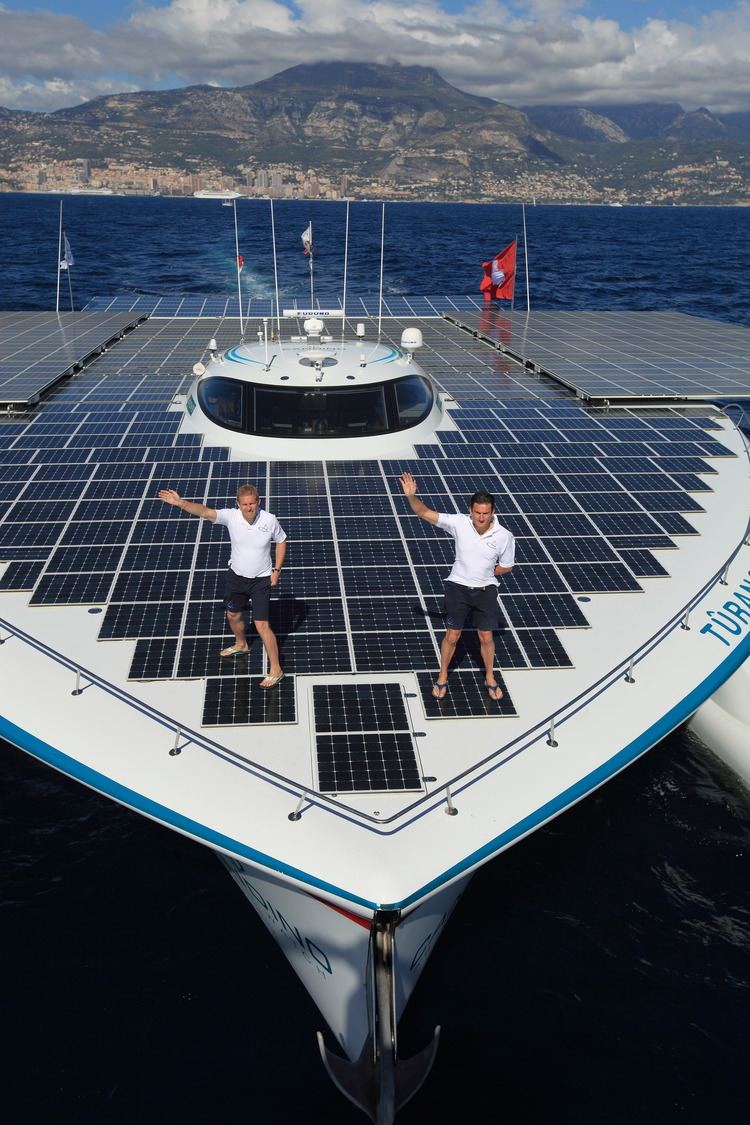Name MS Tûranor PlanetSolar Cost €15 million Launched 31 March 2010 Weight 85 tons Displacement 85,000 kg | Owner PlanetSolar SA Length 31 m Beam 16 m | |
 | ||
Propulsion 2 Permanent Magnet Synchronous Electrical Motors - 60kW each (max) @ 1600 rpm2 Permanent Magnet Synchronous Electrical Motors - 10kW each (max) @ 1000 rpm Speed 14 knots (26 km/h; 16 mph) (max)7.5 knots (13.9 km/h; 8.6 mph) (cruising) | ||
Ms t ranor planetsolar is the largest solar powered boat in the world www goodnews ws
MS Tûranor PlanetSolar, known under the project name PlanetSolar, is the largest solar-powered boat in the world The vessel was designed by LOMOcean Design, built by Knierim Yachtbau in Kiel, Germany, and launched on 31 March 2010.
Contents
- Ms t ranor planetsolar is the largest solar powered boat in the world www goodnews ws
- Ms t ranor planetsolar in malta
- Technical characteristics
- Around the world
- 2013 voyage and transatlantic record
- References

In May 2012, it became the first solar electric vehicle ever to circumnavigate the globe.
Ms t ranor planetsolar in malta
Technical characteristics

The 31-metre boat is covered by 537 m2 of solar panels rated at 93 kW, which in turn connect to two electric motors, one in each hull. There are 8.5 tons of lithium-ion batteries in the ship's two hulls. The boat's shape allows it to reach speeds of up to 14 knots (26 km/h). The hull was model tested in wind tunnels and was tank tested to determine its hydrodynamics and aerodynamics. The boat was designed to be used as a luxury yacht after the record attempt was finished.
It is currently being used as a floating marine research laboratory by Geneva University.

The boat is registered in Switzerland and was financed by a German entrepreneur. Construction cost was €12.5 million. The name Tûranor, derived from J.R.R. Tolkien's novel The Lord of the Rings, translates to "The Power of the Sun".
Around the world

On 27 September 2010, Tûranor PlanetSolar set off from Monaco to circumnavigate the globe solely with the aid of solar power. One aim of the project was to focus public awareness on the importance of renewable energies for environmental protection.

The boat had a crew of six. The captain of the expedition was Frenchman Patrick Marchesseau, but at the midpoint of the circumnavigation (in New Caledonia in mid-May 2011) the French Canadian Erwann Le Rouzic took over as captain.

A significant stopover was Cancún, Mexico, during the 2010 United Nations Climate Change Conference held there from 29 November to 10 December 2010. During the expedition, Tûranor PlanetSolar broke two records: the fastest crossing of the Atlantic Ocean by solar boat and the longest distance ever covered by a solar electric vehicle. Technical problems with the propeller system forced the vessel to stay in an Asian port for two weeks of maintenance. Tûranor PlanetSolar returned to Monaco on 4 May 2012 after 584 days sailing around the globe. The vessel was then scheduled for a refit so it could be chartered to tourists in the Mediterranean Sea. Cruises are planned with 12 passengers and four crew on board.
2013 voyage and transatlantic record
After an engine refit, Tûranor PlanetSolar broke its own record, crossing the Atlantic Ocean from Las Palmas to Saint Martin in the Caribbean in only 22 days, four days faster than on the circumnavigation trip. The boat left Las Palmas on 25 April and arrived in Marigot on Saint Martin on 18 May The trip led to Miami, Florida, and then continued as a scientific expedition along the Gulf Stream. On the return trip the boat reached St John's, Newfoundland, on 1 August 2013 before heading back across the Atlantic.
